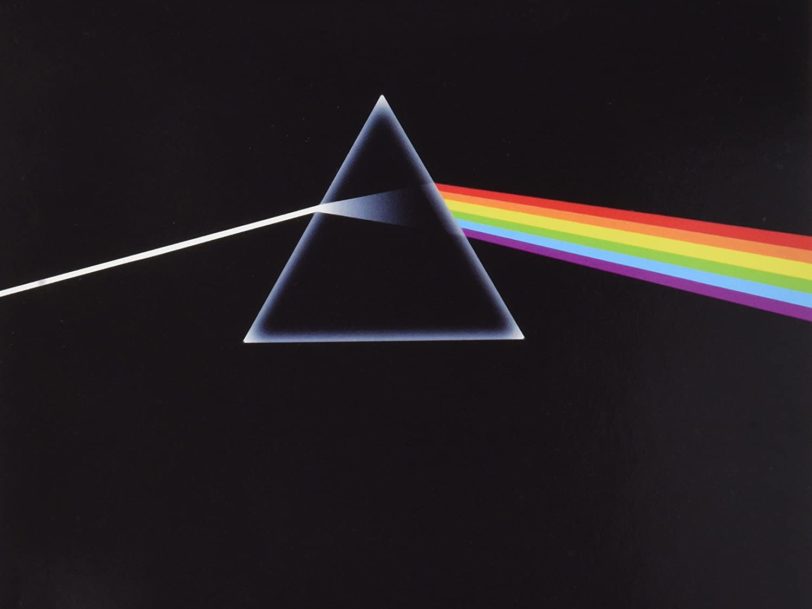Lauded as a masterpiece ever since its release, in March 1973, Pink Floyd’s eighth album, The Dark Side Of The Moon, is easily one of the most influential records in rock roll history. Not only are its unique soundscapes and deeply philosophical lyrics truly timeless, but its immediately recognisable album cover has since passed into pop-culture folklore and been immortalised on T-shirts, posters and other merchandise around the world
Created by British design studio Hipgnosis, it’s easy to see why The Dark Side Of The Moon is considered by many to be one of the best album covers of all time. Here is the story of how Hipgnosis created the iconic rainbow prism logo and birthed an enduring symbol that’s become forever synonymous with the majesty of Pink Floyd.
Listen to the best of Pink Floyd here.
The inspiration: “The idea itself was cunningly cobbled from a standard physics textbook”
Having already created some of the early Pink Floyd album covers, it was no surprise when graphic designers Storm Thorgerson and Aubrey Powell were approached to devise the artwork for The Dark Side Of The Moon. Working from a brief that asked for something clean and elegant, Thorgerson and Powell looked to their bookshelf for inspiration. “The idea itself was cunningly cobbled from a standard physics textbook,” Thorgerson recalled in 2003, in a press interview marking the album’s 30th anniversary.
As they flicked through the textbook’s pages, something striking jumped out at them. “In this book was a photo of a prism on a piece of sheet music and sunlight coming in through the glass window,” Powell explained, according to Jean-Michel Guesdon and Philippe Margotin, authors of Pink Floyd: All The Song. “It was creating this rainbow effect.” Knowing how important light shows were at Pink Floyd’s live concerts, it seemed like a fortuitous discovery, so the designers began to think about how they could adapt the image into something that reflected The Dark Side Of The Moon’s lyrical themes of madness and existentialism.
The design: “No amount of cajoling would get them to consider any other contender”
With artist George Hardie drawing the illustration, the team at Hipgnosis set a triangle against a plain black background, with a beam of light shining through it. “Its outline is triangular and triangles are symbols of ambition, and are redolent of pyramids, both cosmic and mad in equal measure, all these ideas touching on themes in the lyrics,” Thorgerson said in 2003. With a ray of light refracting through the triangular prism and dispersing into six spectral rainbow colours, it seemed the design was always destined to be the perfect visual accompaniment to The Dark Side Of The Moon.




